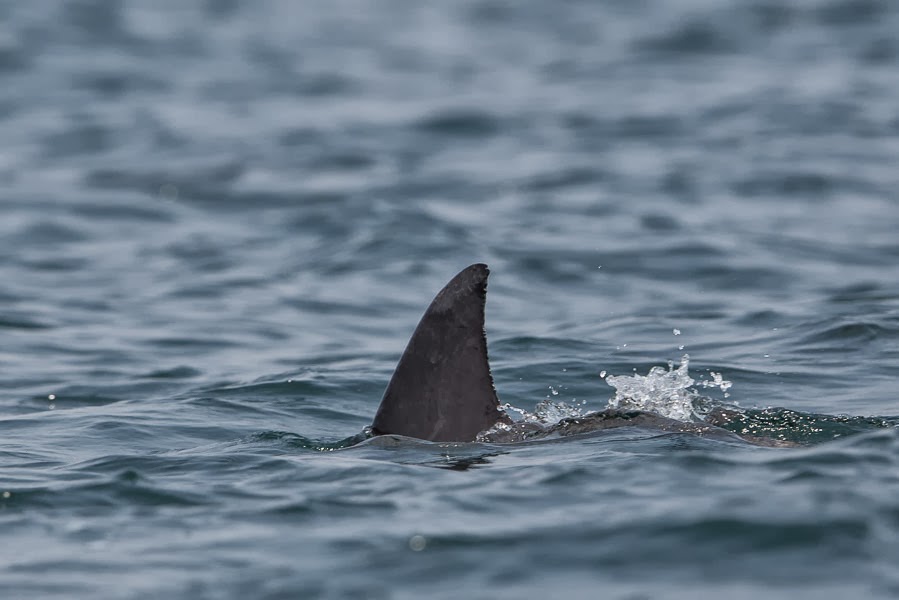The Indo-Pacific Bottlenose Dolphin T. aduncus resembles the Common Bottlenose Dolphin T
truncatus, having a relatively robust body, moderately long beak, and a
falcate dorsal fin, however, the species tends to be smaller than T.
truncatus, has a proportionately longer rostrum and, most distinctively,
develops ventral spotting at about the time of sexual maturity. Maximum size can
reach over two metres in length and 150 kilogramms in weight. Information on
the distribution of T. aduncus suggests the species is widespread along
the entire eastern coast of Africa, through the Red Sea and Persian Gulf,
eastwards as far as Taiwan and south-eastward to the coastal waters of
Australia. Known large concentrations are found in
regions with large shallow-water areas such as the Farasan Islands. Preferred habitat appears to be bare sand habitats; however, they
also use areas with rocky and coral reefs, or sea grass. They can be found over
waters 200 metres deep but are encountered most frequently in waters shallower
than 100 metres, generally with water temperatures of 20-30°C. They seem to prey
mainly on small to medium sized benthic and reef-dwelling fish and cephalopods.
Jem's Birding & Ringing Exploits in the Eastern Province and elsewhere in Saudi Arabia
17 October 2013
Indo-Pacific Bottlenose Dolphin – Offshore Farasan Islands
One day on the Farasan Islands we went to some
offshore islands and spent quite a bit of time looking for Dolphins. There are
three species of dolphins in the Farasan Islands, Indo-Pacific Humpbacked Dolphin Sousa chinensis Spinner Dolphin Stenella longirostris and Indo-Pacific Bottlenose Dolphin Tursiops aduncus.
Initially we could not find any dolphins in the main area where they occur but
on the way back to Farasan Kabir I found a large group of 50+ Indo-Pacific
Bottlenose Dolphin feeding in some open water. We spent two hours at very close
quarters looking at them which was a really amazing experience and the family
had a great time with the dolphins feeding and playing right in front of the
boat. Although there was a minimum of fifty animals present trying to
photograph them on a moving boat at close range with a big 600mm lens was very
difficult.












